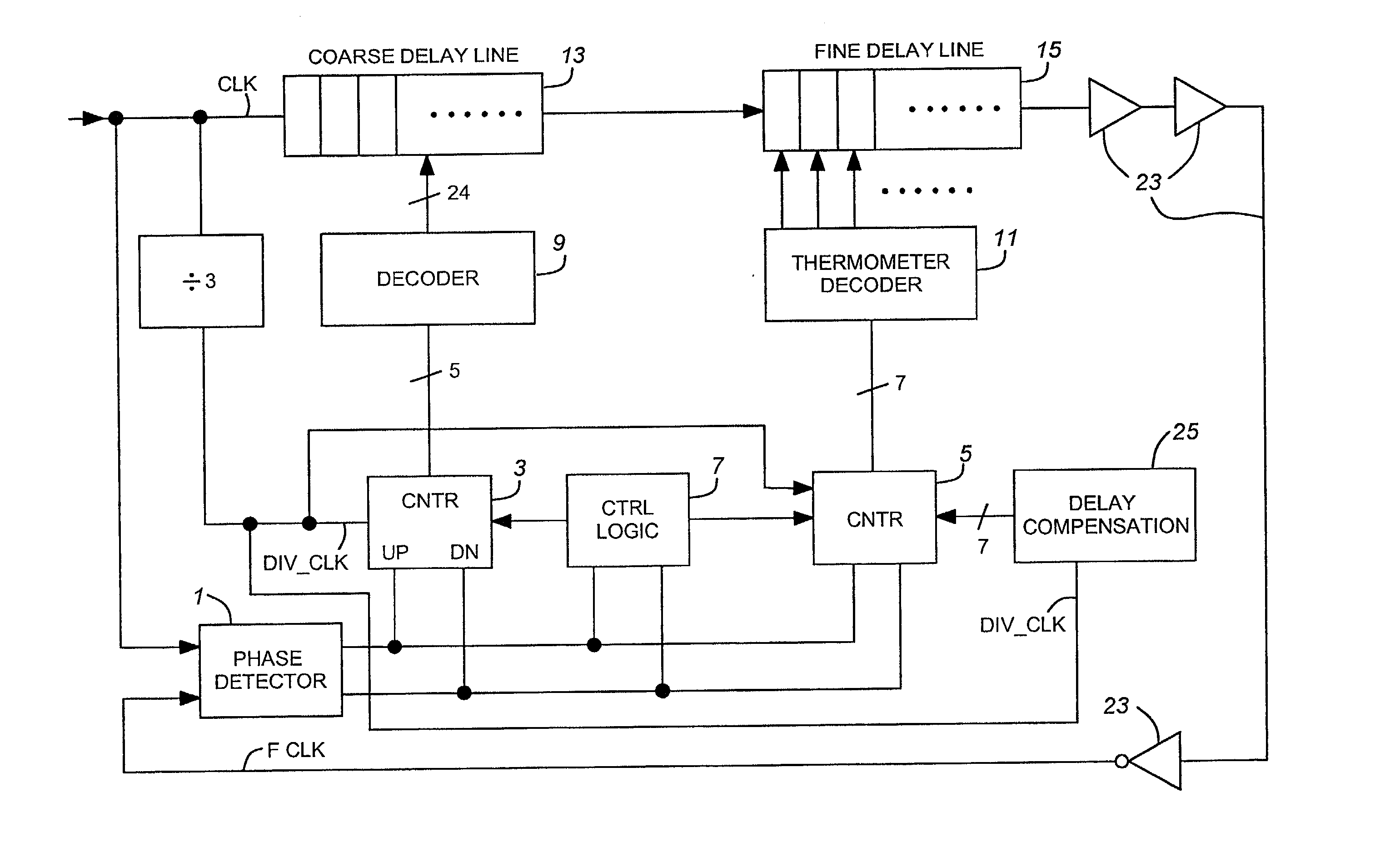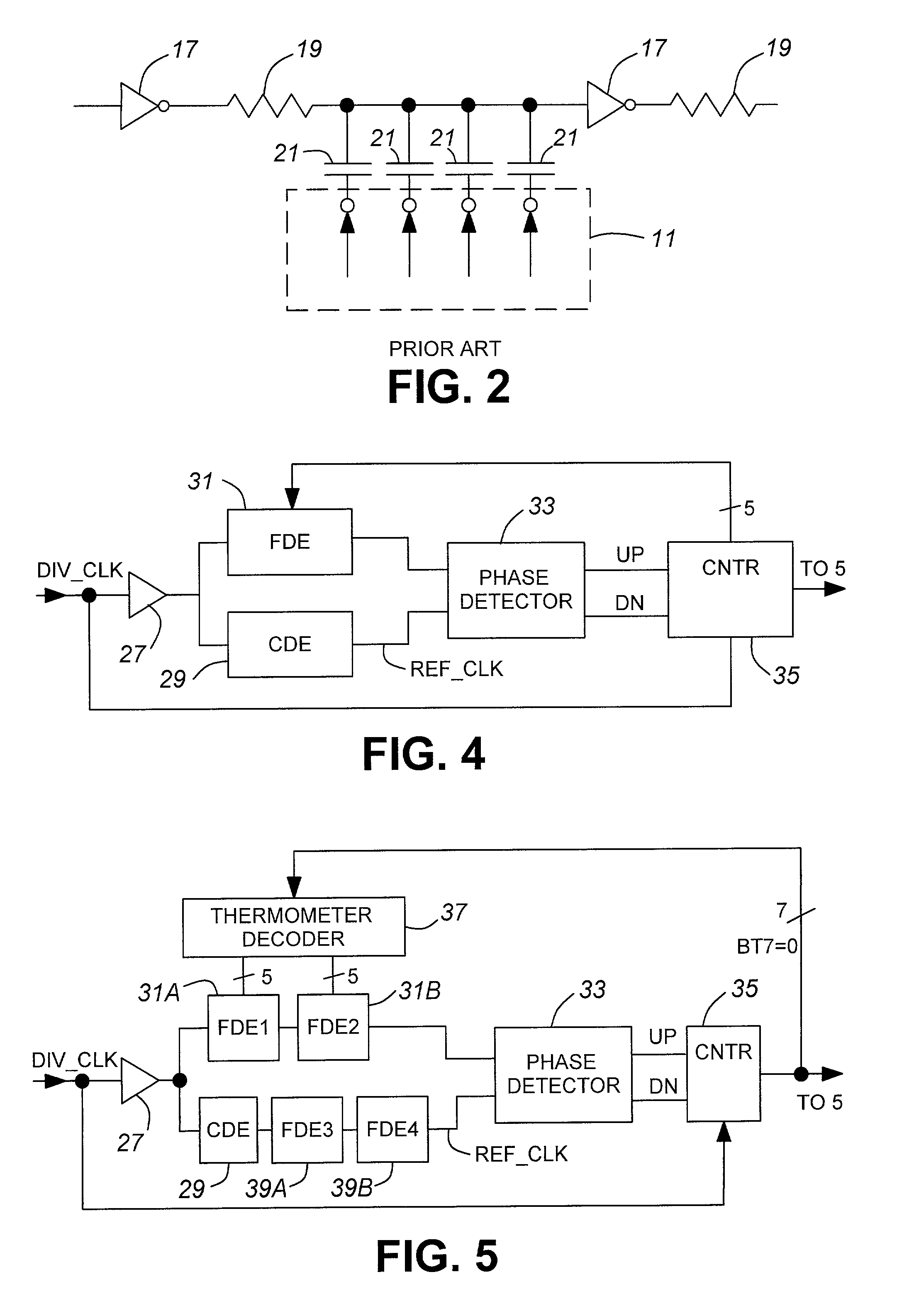Process, voltage, temperature independent switched delay compensation scheme
a delay compensation and temperature-dependent technology, applied in the field of digital delay locked loops, can solve the problems of inability to predict the amount of jitter between 200 ps and 300 ps, the inability to track the track, and the inability to detect the delay
- Summary
- Abstract
- Description
- Claims
- Application Information
AI Technical Summary
Benefits of technology
Problems solved by technology
Method used
Image
Examples
Embodiment Construction
[0025] FIG. 1 illustrates a DLL in accordance with the prior art. A phase detector 1 receives a system clock (CLK) signal and a feedback clock (FCLK) signal, compares the phase of the FCLK signal with that of the CLK signal, and issues up and down count control signals to a coarse adjust counter 3, and fine adjust counter 5. The up and down signals are also monitored by a control logic (CTRL LOGIC) circuit 7, which controls counters 3 and 5.
[0026] The outputs of the counters 3 and 5 are coupled to decoders 9 and 11, which decode the counter outputs and apply control signals respectively to coarse delay line 13 and to fine delay line 15. The CLK signal is coupled to an input of the course delay line, and the output of the coarse delay line is coupled to the input of the fine delay line. Typically the coarse delay line 13 is formed of RC (resistor-capacitor) delay elements and inverters which are selectively connected in series with each other by respective multiplexers. Preferably th...
PUM
 Login to View More
Login to View More Abstract
Description
Claims
Application Information
 Login to View More
Login to View More - R&D
- Intellectual Property
- Life Sciences
- Materials
- Tech Scout
- Unparalleled Data Quality
- Higher Quality Content
- 60% Fewer Hallucinations
Browse by: Latest US Patents, China's latest patents, Technical Efficacy Thesaurus, Application Domain, Technology Topic, Popular Technical Reports.
© 2025 PatSnap. All rights reserved.Legal|Privacy policy|Modern Slavery Act Transparency Statement|Sitemap|About US| Contact US: help@patsnap.com



